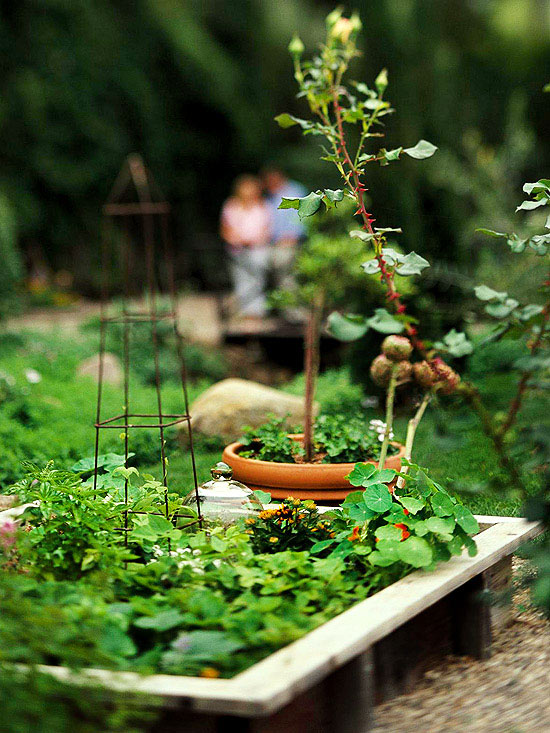






Planning a vegetable garden layout and successfully harvesting your own produce is easier than you might think. Here are simple tips and ideas to help you get started on your own vegetable garden.
Pick a Site
The more sunlight the better, but you'll need at least six hours of direct sunlight each day. Make sure the spot you select isn't shaded during different times of the day by trees, walls, or buildings. In addition, place your site well away from large trees, which can compete for moisture and nutrients. And if you're just getting started with vegetable gardening, you might want to consider starting with just a small plot or even container gardening.
Prep the Site
Raised beds are a good way to get started with a new vegetable garden --they're simple to build and can be filled with high quality topsoil instead of amending existing soil. Before building a raised bed and filling it with topsoil, make sure any lawn is completely removed and dead. If you live in an area that has rabbits or deer, consider a fence of the appropriate height.
Raised Vegetable Garden Layout Ideas
Raised beds -- simple rectangular wooden frames 8-10 inches tall -- are the preferred way to grow a vegetable garden. Soil in raised beds warms quickly in spring, lengthening the growing season, and can be filled with high quality topsoil. Raised beds should be accessible from all sides and no more than 4 feet wide so all parts of it can be reached from the perimeter. Design your vegetable garden layout so plants get progressively taller from the south edge to the north.
See how to build a raised bed vegetable garden.
Tend Your Vegetable Garden
Stay on top of weeds -- hand pulling or hoeing is best in vegetable gardens. Water regularly so the soil stays consistently moist; don't let it dry completely before watering again. And fertilize regularly; most vegetables are heavy feeders.
Small Vegetable Garden Layout Ideas
If you're working with a small space, there are easy plant combinations that you'll enjoy harvesting. Try these ideas:
Choose Your Plants
Dependable, easy vegetables to grow in summer include peppers, tomatoes, beans, squash, corn, and cucumbers.
For spring and fall, try lettuce, broccoli, cauliflower, radishes, and carrots. There are many other options, but these are all good for beginning gardeners.
8 Best Vegetable Garden Starter Plants
If you're unsure where to start with your vegetable garden, consider these sure-fire plants that work well together and, with proper tending, produce crops that will convince you of the value of your own home-grown produce. Try:
Vegetable Garden Layout Plans and Planner
Click here to find a selection of free vegetable garden plans to get you started.
Tips for Preparing Organic Vegetable Garden Soil
Coming Up With an Effective Small Vegetable Garden Layout
Tips for Choosing Organic Vegetable Garden Seed
Coming Up With a Successful Vegetable Garden Layout Idea
Vegetable Garden Layout Will Affect Vegetable Production
Copyright © www.100flowers.win Botanic Garden All Rights Reserved